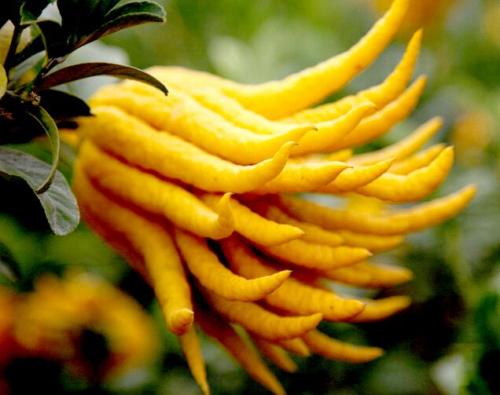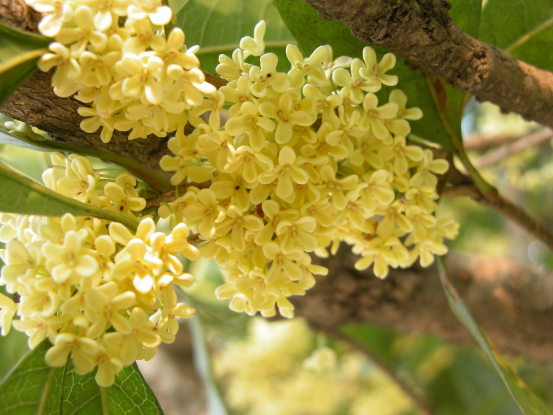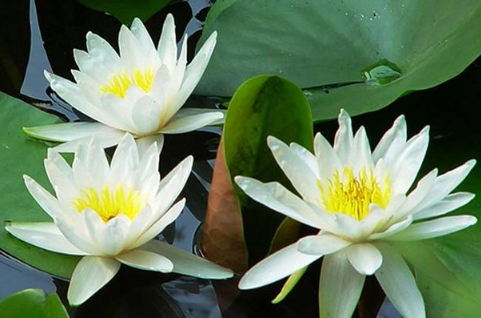Culture methods of bergamot
1. Light and temperature
Bergamot likes warm, humid and sunny environment, so it is necessary to ensure adequate light. In addition, the most suitable growth temperature of bergamot is 22-24 degrees, so we should pay attention to temperature control.
2. Watering
Bergamot is resistant to waterlogging and drought, so it is necessary to water bergamot often, sooner or later in summer, not so frequently in winter, just keep the basin soil wet.
3. Fertilization
Bergamot needs fertilizer to grow, so fertilize bergamot every once in a while, and control the amount of fertilizer and choose different fertilizers.
4. Soil
Bergamot soil should choose loose soil and good drainage and permeability, which is beneficial to keep the basin soil dry.
5. Pruning
In order to ensure the high yield and stable growth of bergamot, it is necessary to prune bergamot, which can ensure the growth of bergamot.
6. Disease and pest control
Bergamot is prone to diseases and insect pests. Once diseased branches are found, they should be cut off immediately and then be treated with drugs. If pests are found, insecticide should be sprayed immediately.

These are the breeding methods of bergamot. Is it easy to learn? I hope the efficacy and function of bergamot introduced to you by the editor can make you understand bergamot better! Thank you for your reading!
Culture methods of bergamot
Introduction and culture methods of bergamot
Bergamot alias five finger mandarin, bergamot, golden bergamot, the best appreciation period: November to December. Ornamental characteristics of bergamot: evergreen shrubs or small trees, 1 to 4 meters high. There are water chestnuts on the tips of the branches, and the twigs are purplish red. The flowers are white and purple and blossom 2 or 3 times a year. Fruit orange, very fragrant, the top split such as fist or open such as finger, crack such as fist called Buddha boxing or closed bergamot, open such as finger called open bergamot or bergamot. The fruit is thick and the pulp is almost completely degraded. Suitable environment for bergamot: like warm and humid climate. Like the light, but avoid the burning sun, not resistant to shade. Afraid of both drought and stagnant water. It is afraid of the cold, and the optimum temperature is 2535 degrees. The culture method of bergamot: cuttage, grafting, striping and other culture methods. The cuttings are from late June to early July. Take the spring shoot on the strong mother plant, the autumn shoot as cuttings, remove leaf thorns, leave 3-4 buds, about 13 cm long, obliquely inserted into the sandy soil 2/3, often keep moist, 1 month action can take root, 2 months after germination can be planted separately. Grafting is usually carried out in the rainy season by relying on grafting and cutting abdomen. High-pressure strips are generally carried out from June to August, select exuberant branches with high pressure, cut the cortex with a knife about 3 cm long, or annular peeling about 1 cm, with soil bag, wrapped with plastic film, often watered and moisturized, about 1 month can be root, about 2 months later can be cut and transplanting. Cultivation and nursing of bergamot: like fertilizer, should be combined with watering and timely fertilization. It was applied once a week when spring shoots were produced, and twice a week in the peak growth period (from mid-June to mid-July), mainly phosphorus and potassium fertilizer, less nitrogen fertilizer, 2-3 times a month. After fruit harvest, in order to restore the tree potential, promote flower bud differentiation, and be beneficial to blossom and fruiting in the coming year, it should be combined with watering. In the period of high temperature and hot summer, in addition to watering in the morning and evening, it is also necessary to spray water on and around the leaves. After entering autumn, the response to watering should be reduced. Just keep the soil moist in winter. In the early stage of flowering and fruiting, it is not advisable to water more in order to prevent falling flowers and fruits. All the flowers blooming from April to early June were picked, because most of them were unisexual flowers and did not bear fruit. For the flowers blooming around the end of June, there are only 1 or 2 flowers per short branch, which are expected to be thinned out. During the flowering and fruiting period, the new buds on the dry branches should be erased, otherwise a large number of fruit drops will occur. The courtyard collocation of bergamot: green leaves, evergreen four seasons, fragrant flowers, golden fruit, strange shape, beautiful trees with beautiful color and fragrance, planted in the south, solitary planting, group planting and so on.
Loading
Culture methods and matters needing attention of bergamot
Culture methods of bergamot temperature and light
The best growth temperature of bergamot is about 22-24 ℃, as long as the temperature is above 5 ℃, it can survive the winter safely. It is best to ensure that the annual sunshine hours of bergamot is between 1200 and 1800 hours.
Watering condition
The humidity of bergamot is generally 70% to 90%. The root system of bergamot is shallow and needs to be watered frequently. The high temperature period in summer is the prosperous growth period of bergamot, which requires a lot of water, so it should be watered sooner or later, and spray water is used to improve the humidity of the surrounding air. After the beginning of autumn, the amount of water gradually decreased. The temperature in late winter and early spring is relatively low, due to slow indoor evaporation, watering should not be too frequent, generally can be watered every three or five days to keep the basin soil moist. In the initial stage of bergamot blooming and fruiting, watering should not be too much to prevent a large number of flowers and fruits.
Fertilizer status
Spring is the time for bergamot to produce new shoots, and fertilization should be light at this time. It is best to apply nitrogen fertilizer thinly once a week combined with watering. The summer bergamot flower multiplication fruit stilbene, needs the fertilizer quantity to be big, the fat degree should be thickened. In early autumn, phosphorus, potassium and calcium compound fertilizer should be applied, which is beneficial to improve the fruit setting rate. After picking the fruit, we should apply phosphorus and potassium fertilizer in time to supplement nutrition to the plant in order to restore growth and lay a good foundation for flowering and fruiting in the second year.
Soil
Choose to grow in acid loam with loose and fertile soil and good drainage.
Matters needing attention in culture of bergamot disease and pest control
The main diseases and insect pests of bergamot are leaf moth, red spider, rust wall lice, scale insect, anthrax and so on. It is necessary to take "prevention first and comprehensive control". Once diseases and insect pests occur, corresponding measures should be taken in time to adjust daily maintenance measures and carry out chemical control.
Pruning work
Bergamot grows rapidly and has many branches, so it is necessary to do a good job of pruning and shaping every year to keep the tree growing vigorously and branches evenly distributed. In the peak period of flowers and fruits, sprouting usually begins in March and pruning after fruit harvest in autumn and winter. Pruning and shaping was carried out after fruit picking and before sprouting in March, cutting off cross branches, withered branches, diseased branches and long branches. Short branches should be kept as far as possible, because many of them are fruiting mother branches, and the rest of the summer shoots should be cut off except for individual needs to expand the crown.
Change basin work
Generally, the basin should be changed once in 2 ~ 3 years, which can be carried out in February-March or September-October, and new nutrient soil can be added at the same time. While changing the basin, you can also trim the bergamot appropriately. After changing the basin, put it in the semi-shade to maintain for a period of time, and then return to normal maintenance.
- Prev

Matters needing attention in cultivating sweet-scented osmanthus trees
1. Pay attention to the times and amount of watering. Too much watering will cause stagnant water in the roots, which may seriously cause plant death. 2. Sweet-scented osmanthus is a typical long-sunshine plant. If it does not get enough light in the growing period, the plant is easy to grow and affect the flowering period. 3. Potted sweet-scented osmanthus needs to be changed once every two years.
- Next

Matters needing attention in planting bowl lotus
1. Light bowl lotus can not be nurtured indoors for a long time, otherwise it will grow slowly, so it is necessary to receive more light outdoors, so the plant will grow more vigorously. two。 Fertilizer bowl lotus likes fertilizer, lack of fertilizer plants will lack vitality, before planting should add a small amount of mature cake and other base fertilizer. Although the bowl lotus likes to be fat
Related
- Fuxing push coffee new agricultural production and marketing class: lack of small-scale processing plants
- Jujube rice field leisure farm deep ploughing Yilan for five years to create a space for organic food and play
- Nongyu Farm-A trial of organic papaya for brave women with advanced technology
- Four points for attention in the prevention and control of diseases and insect pests of edible fungi
- How to add nutrient solution to Edible Fungi
- Is there any good way to control edible fungus mites?
- Open Inoculation Technology of Edible Fungi
- Is there any clever way to use fertilizer for edible fungus in winter?
- What agents are used to kill the pathogens of edible fungi in the mushroom shed?
- Rapid drying of Edible Fungi

